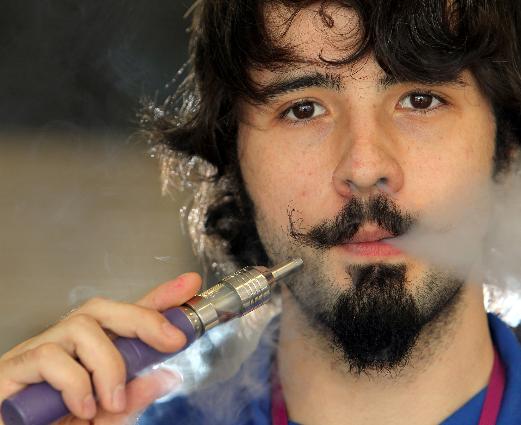Safety of e-cigarette vapors questioned
Tracey Drury, Buffalo Business First Reporter-Business First
It’s been years since viewers have sat through a cigarette commercial during the Super Bowl, with commercials for beer and cars dominating advertising.
But this weekend’s game included for the second consecutive year an ad for NJOY King, an electronic cigarette, with a theme of friends helping friends.
The response has been mixed from health advocates. While some say inhaling vapors or “vaping” is safer than smoking traditional tobacco cigarettes, others insist quitting entirely is the healthiest course of action. And it turns out vaping also exposes non-users to nicotine in the same way secondhand smoke affects those who spend time around smokers, though at much lower levels.
That’s according to research by Maciej Goniewicz, an assistant professor of oncology at Roswell Park Cancer Institute’sDepartment of Health Behavior, published by the journal Nicotine and Tobacco Research.
Goniewicz and his team studied vapor from three different brands of e-cigarettes, as well as secondhand smoke exposure of vapors and tobacco smoke generated by dual users. The results showed the e-cigarettes emit nicotine at levels of about 10 times less than conventional tobacco cigarettes, though they did not emit substantial amounts of carbon monoxide and toxic volatile organic compounds.
The study was a collaboration between Roswell Park and researchers at the Medical University of Silesia in Poland.
Though exposure to toxins is substantially lower, there’s still no definitive data on short and longterm health: The U.S. Surgeon General has not yet evaluated the short and longterm health risk from secondhand exposure to vapors.
“We don’t know yet the longterm affects of using these products,” Goniewicz said. “We know there are some traces of some potentially dangerous chemicals in the vapor. We don’t know what will happen after 10-20 years of inhaling this vapor.”
Still, vaping is considerably less dangerous than regular cigarettes, since users and those around them are exposed to significantly less toxins.
“The clear conclusion is that these products are safer than tobacco cigarettes. When you compare them, we believe these products are safer than tobacco cigarettes, but there is no doubt for smokers that quitting is the best way,” he said.
The other growing issue is how to handle vaping indoors, including in public places, restaurants and the workplace. The Food & Drug Administration and individual states place limits on advertising and how and where tobacco cigarettes are sold, but there have not yet been any rulings on exactly whether e-cigarettes fall into the same category.
A number of companies have already taken steps to limit vaping in the workplace, while in other places, it’s the state or municipality making the rules: New York City Council in December voted to ban the use of e-cigarettes in all places where smoking is prohibited. The Niagara Frontier Transportation Authority is now considering a ban on its transit vehicles and within its properties.
Goniewicz said he believes vaping should be limited as well to protect non-users, but it’s a difficult question.
“The main reason we have the indoor smoke-free law is to protect non smokers from being exposed to tobacco smoke,” he said. “We should protect these people from being exposed to vapor. But some people also believe that since we know this product is safer for smokers and it has the potential to save the lives of smokers, how can we encourage smokers to use electronic cigarettes instead of smoking? Any regulation should balance between the potential benefits and harm from the products.”
http://www.bizjournals.com/buffalo/blog/health_matters/2014/02/safety-of-e-cigarette-vapors-questioned.html


